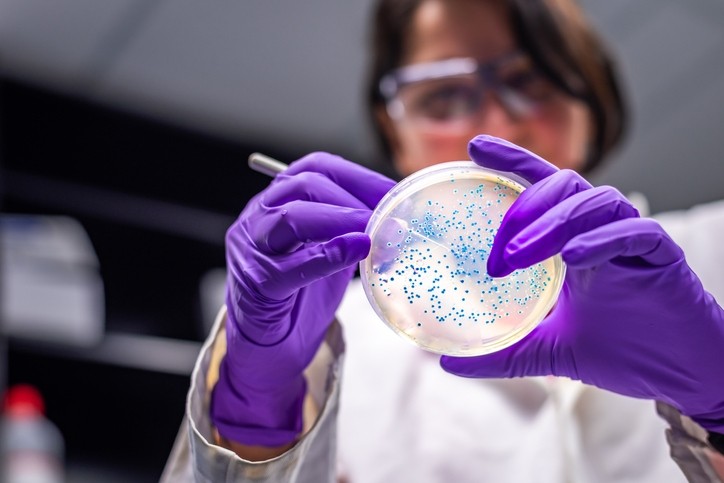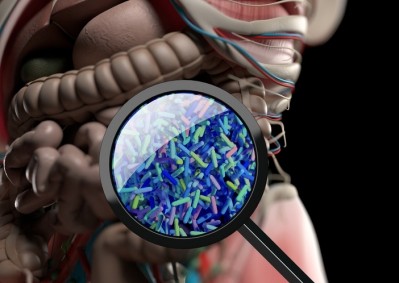Research finds faecal markers assist in Alzheimer's diagnosis

Emerging evidences show that dysbiosis and alterations of the intestinal microbiota contribute to the development of neurodegenerative diseases via the “microbiota-gut-brain” axis, with some revealing the relationship between gut microbiota (GMB) and AD. Decreased diversity in microbiota is reported in AD and mild cognitive impairment (MCI) patients compared with normal controls, and changes in intestinal microbiota have been suggested as useful for early detection of AD.
The clarification of the gut-brain axis in AD pathogenesis would provide accessible markers from faeces. Although 16S ribosomal RNA (rRNA) gene sequencing allows for profiling of complex microbial composition and indicating the microbial entities, annotation and the actual microbial activity of GMB is sparse as 16S rRNA gene sequence only provides a global composition analysis but cannot distinguish alive and dead microbes. Faecal metabolites therefore could complement sequencing-based approaches with showing functional readout of microbial activity.
The current study investigated the altered GMB composition and metabolic changes in faecal samples relevant to AD. Using a correlation analysis, the researchers determined the potential functional microbiota and their metabolic output, and further identified the potential faecal markers of AD.
Considering that compounds influenced by bacteria may cause systemic inflammatory reactions, and the altered cytokine levels had been reported as potential hallmark of AD, they also analysed the association between differential faecal markers and peripheral inflammatory cytokines that linked with AD to further understand the function of altered GMB composition.
Results
The resulting data suggests AD was characterized by increased 13 genera, of which 46.7% (7/15 general) was significantly associated with a series of metabolite markers. The abundance of genera Pseudomonas and Faecalibacterium significantly increased in AD participants.
Pathway analysis linked the alteration of metabolites to three metabolic pathways including Steroid hormone biosynthesis, N-Acyl amino acid metabolism and Piperidine metabolism. Together, these findings suggest the potential mechanism of GMB affecting occurrence or development of AD.
Notably, among 15 altered metabolites in AD, 7 metabolites belong to lipid or lipid-like molecules, suggesting that lipid-mediated metabolic or synthetic processes in gut are linked with AD. The 19-Oxoandrost-4-ene-3, 17-dione, a decreased lipid-like molecular in AD compared with NC group was involved in estrogen biosynthesis. Estrogen not only prevents vascular disease but also plays an important role in the preservation of neurons. A population-based study indicated higher frequency of estrogen use in non-patients compared with Alzheimer’s disease patients. Thus, tehe authors of the current study suggest decreased 19-Oxoandrost-4-ene-3, 17-dione in the gut may influence the AD pathology by downregulating the estrogen.
5-Butyl-3, 4-dimethyl-2-furanundecanoic acid, another decreased lipid-like metabolite in AD, is a furan fatty acid (F-acid). F-acids play a protective role for Alzheimer’s disease progression mainly by preventing lipid peroxidation and protecting polyunsaturated fatty acids (PUFAs), suggesting a possible mechanism for the lower level of these in AD participants.
Regarding amino acid metabolism, all three metabolites belonging to organic acids showed a decreased level in AD, among which N-Docosahexaenoyl GABA was annotated to be involved in N-Acyl amino acid metabolism. Consistent with the current study's results, N-acyl amino acids have anti-inflammatory and neuroprotective effects, but their biosynthesis and catabolism have not been fully elucidated.
The researchers also observed decreased serum G-CSF and IFN-γ level in AD participants compared with NC participants. A previous mouse model experiment proved that subcutaneous administration of G-CSF into two different Aβ–induced AD mouse models could substantially rescue their cognitive/memory functions. Additionally, in a stroke mouse model, administration of G-CSF could lead to neurogenesis near the injured area and the neurological and functional recovery. With respect to IFN-γ, although the relationship between IFN-γ level and AD has not been reported, IFN-γ overexpression was previously found to reduce Aβ deposits and peripheral monocytes infiltration in amyloid precursor protein (APP) transgenic mice.
By integrating the correlation analyses of three groups of markers (GMB, fecal metabolites and peripheral inflammatory cytokines), the researchers found two potential mechanistic pathways for the activity and function of GMB in AD pathogenesis. One pathway was that decrease of 19-Oxoandrost-4-ene-(3,17)-dione metabolite caused by low abundance of gut Erysipelatoclostridium might lead to reduction of peripheral IFN-γ level, which subsequently influenced AD pathogenesis. The second pathway was that increase of Trigofoenoside F metabolite caused by high abundance of gut Cloacibacillus might lead to reduction of peripheral G-CSF level and then influenced AD pathogenesis.
The authors note several limitations to this study including the small sample size and the study's inability to prove a cause and effect relationship between the CMB and AD. They say a functional study should be carried out to clarify the “bacterial-metabolite-cytokine” mechanism in AD pathogenesis and define the specific and effective targets for AD intervention and therapy, and neuroimaging markers should be included in further confirmatory studies for accurate diagnosis.
Source: BMC Microbiology
Xi, J., Ding, D., Zhu, H. et al.
"Disturbed microbial ecology in Alzheimer’s disease: evidence from the gut microbiota and fecal metabolome"
https://doi.org/10.1186/s12866-021-02286-z















